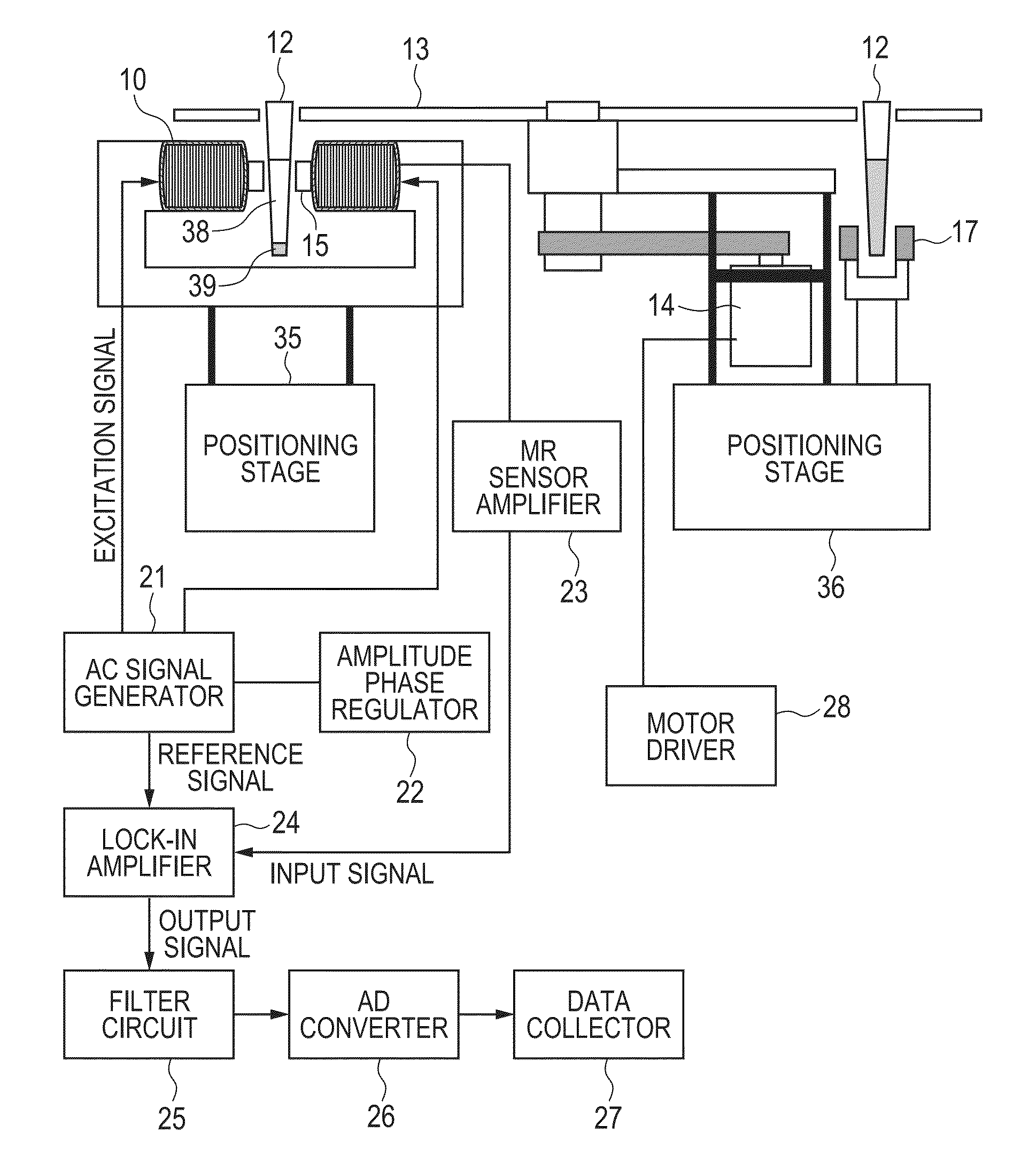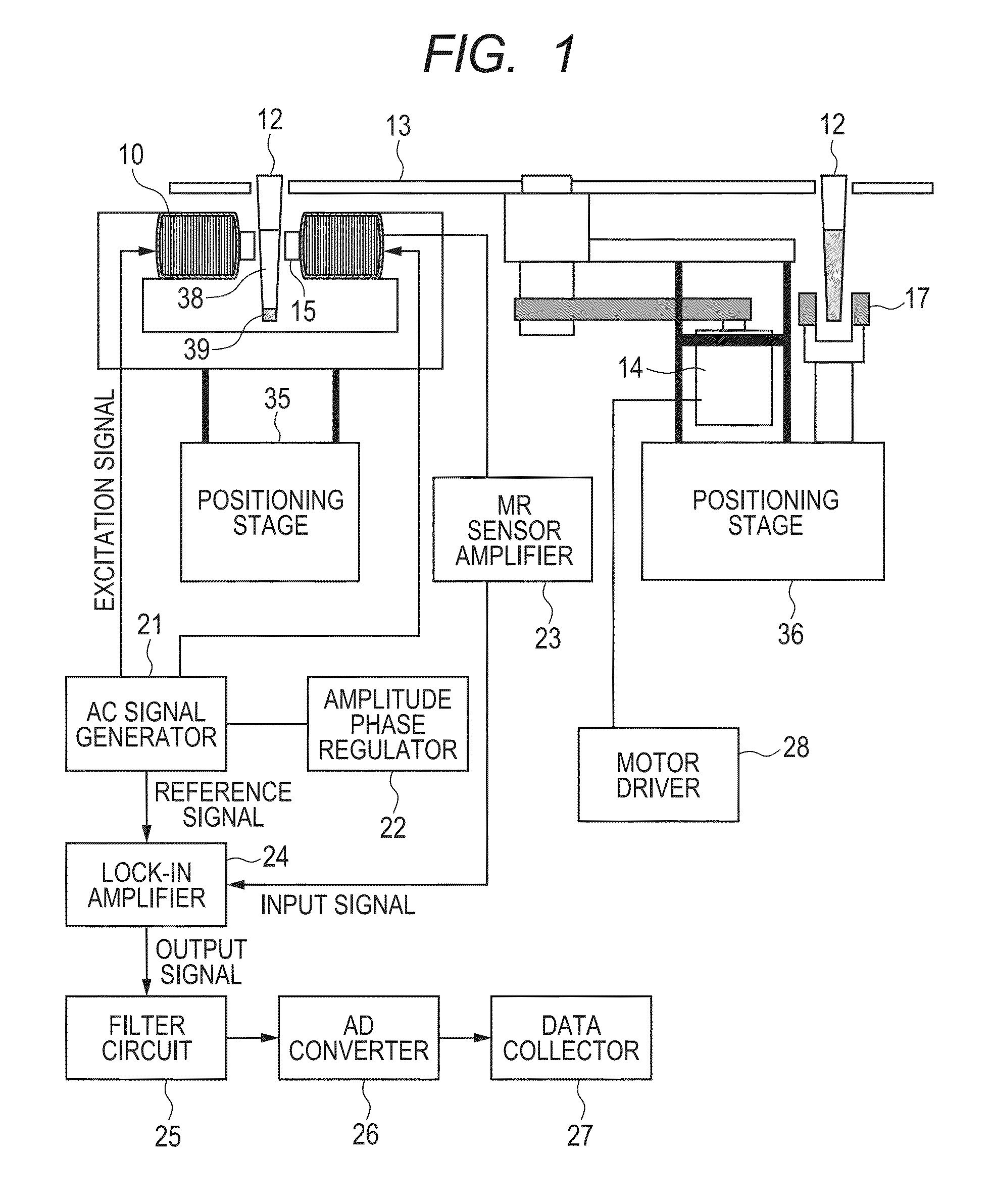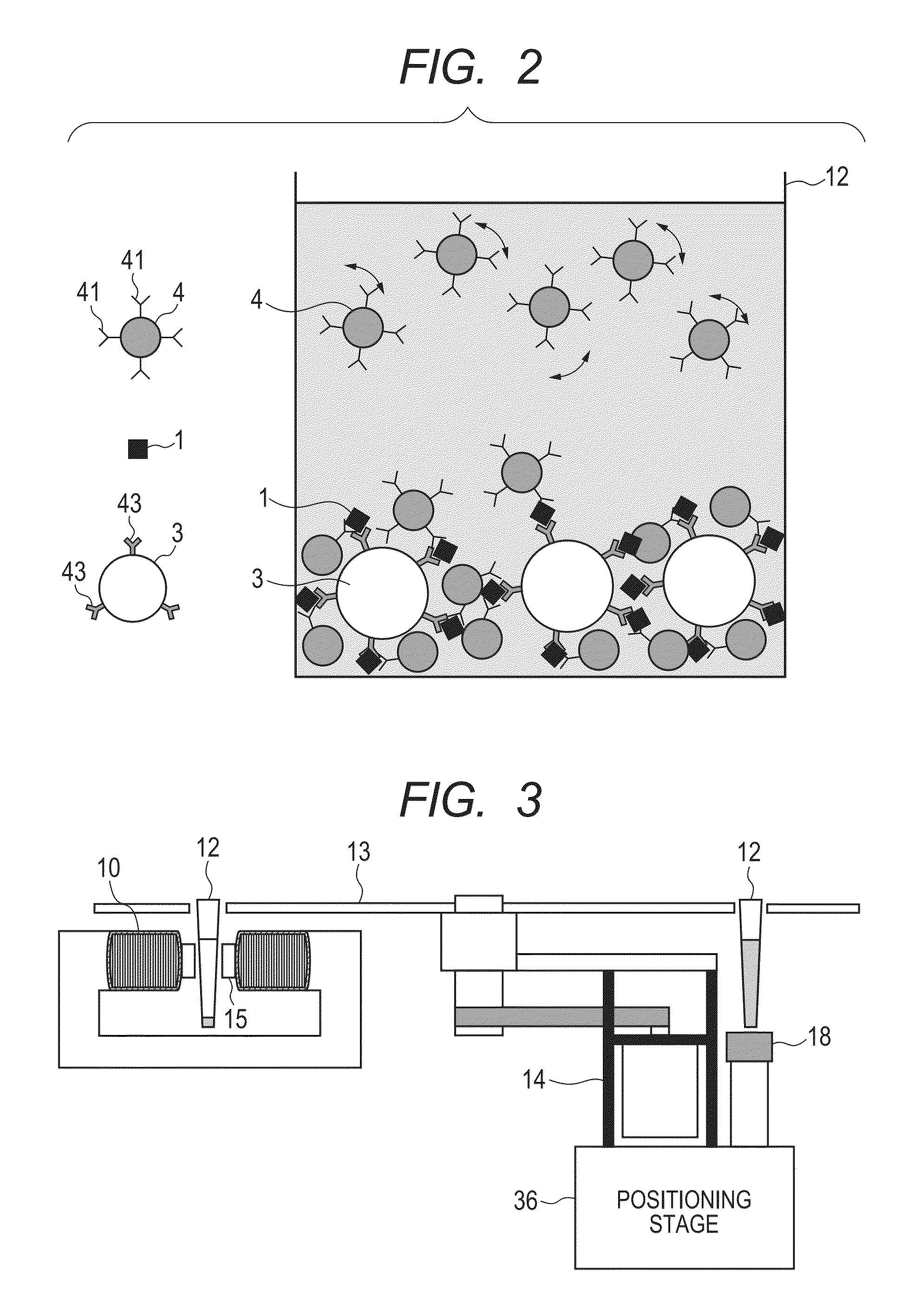Magnetic immunoassay using AC susceptibility measurement
a technology of magnetic immunoassay and susceptibility measurement, which is applied in the field of immunoassay, can solve the problems of signal detection, difficult to handle, and poor dispersion of magnetic particles with strong residual magnetism, and achieve the effect of avoiding the surface and high precision
- Summary
- Abstract
- Description
- Claims
- Application Information
AI Technical Summary
Benefits of technology
Problems solved by technology
Method used
Image
Examples
first embodiment
[0032]An immunoassay apparatus used in a first embodiment of the present invention has an apparatus configuration as illustrated in FIG. 1. A main configuration is as follows.
[0033]A magnetizing coil 10 for magnetizing magnetic particles is wound around a U-shaped core and is driven by an AC signal generator 21. An inspection sample is put in a sample vessel 12 that is mounted on a circumference of a disk-shaped sample support 13. The sample support 13 rotatably moves by a DC motor 14. The motor drive 28 drives the DC motor 14 and controls a rotation thereof. The arranged sample vessel 12 is first mounted at a position of a coil 17 applying a dissociating magnetic field by the rotation of the sample support 13 and then is mounted in a cap of the core of the magnetizing coil 10.
[0034]The cap of the core of the magnetizing coil 10 is provided with magnetic resistance effect element (MR sensor) 15 and when the same cap is mounted with the sample vessel 12, the magnetic particle within ...
modified embodiment
[0048]In the foregoing embodiment, the object to be measured was an antigen and the conjugate fixed to the magnetic particle and the immobilized beads to be peculiarly coupled with the antigen was an antibody. The measured material may be an antibody and the conjugate fixed to the magnetic particle and the immobilized beads may be an antigen. Further, the modification can be made by the coupling reaction of the magnetic particle and the immobilized beads using another peculiar and selective coupling. Representatively, a configuration of fixing the ligands each coupled with acceptors included in the object to be measured as the conjugate to the magnetic particle and the immobilized beads may also be adopted. In addition, when the object to be measured is biotin, or the biotin is coupled as a mark with the object to be measured, the magnetic particle and the immobilized beads fixed with avidin or streptavidin as a conjugate may be adopted.
[0049]Further, in the embodiment, as the sandw...
embodiment
Verification of Effect in Embodiment
[0053]In order to verify the effect of the measurement according to the configuration of the apparatus according to the foregoing embodiment, the measurement was performed using the following sample. As the magnetic particle, MagCellect streptavidin mark magnetic minute particle (R&D Systems Inc.) commercially available as the purpose of cell dissociation was used. Further, the biotin molecule was selected as the object to be measured.
[0054]Instead of adding the object to be measured and the immobilized beads to the solution, a biotin bead in which the biotin is fixed to a polystyrene bead in advance was used (particle size of 3.3 μm, Spherotech, Inc.). These samples were diluted with a phosphate buffer solution and the biotin bead was diluted so that the final concentration of the biotin bead is 1.1e6 to 1.7e7 number / mL. Next, the two samples were mixed and coupled and reacted at 37° C. for one hour (bead sample) Further, the sample of the non-co...
PUM
| Property | Measurement | Unit |
|---|---|---|
| particle size | aaaaa | aaaaa |
| diameter | aaaaa | aaaaa |
| diameter | aaaaa | aaaaa |
Abstract
Description
Claims
Application Information
 Login to View More
Login to View More - R&D
- Intellectual Property
- Life Sciences
- Materials
- Tech Scout
- Unparalleled Data Quality
- Higher Quality Content
- 60% Fewer Hallucinations
Browse by: Latest US Patents, China's latest patents, Technical Efficacy Thesaurus, Application Domain, Technology Topic, Popular Technical Reports.
© 2025 PatSnap. All rights reserved.Legal|Privacy policy|Modern Slavery Act Transparency Statement|Sitemap|About US| Contact US: help@patsnap.com



